The 8 Best Conical Fermenters for Homebrewing [2022]


Like most homebrewers, I got my start fermenting in plastic buckets and glass carboys. While you can make great beer in a plastic brew bucket, they aren’t exactly feature-rich. After hearing too many horror stories of lost beer, deep lacerations, and even death associated with breaking a glass carboy, I eventually decided I didn’t want to risk using them anymore and started looking for a better option. After looking at my options and looking at what was most similar to the fermentation tanks used by commercial breweries, I decided that a conical fermenter was the way to go after doing a lot of research. There are a lot of available options, and in this article we focus on conical fermenters that are ideal for standard 5-gallon batches. Here is our guide to the best conical fermenters for homebrewing!
What is a Conical Fermenter?
Conical fermenters are cone-shaped fermentation vessels with a valve on the bottom of the cone. As yeast and other solids fall out of suspension during fermentation, they settle in the bottom of the cone. This trub can then be removed from the beer introducing a risk of infection or oxidation.
Advantages of Conical Fermenters
Conical fermenters have several advantages over carboys and bucket-style fermenters. Here are a few of the main reasons that they are better than flat-bottomed fermenters:
No-Transfer Secondary Fermentation
First, there is no need to transfer to a secondary fermenter with a conical fermenter. You can simply open the bottom valve to remove the sediment that falls out of suspension during primary fermentation. You do not need to risk oxidizing the beer moving it to a second fermenter. This also improves your beer’s clarity, and avoids getting sediment into your kegs or bottles.
Easy Yeast Harvesting
Second, the bottom valves on conical fermenters provide you with the ability to harvest viable yeast during fermentation that you can reuse in future batches. Some of the fermenters below use butterfly valves with attachable yeast containers and others have valves to dump the yeast. Harvesting yeast from a carboy is very difficult, and harvesting from a bucket can cause infection issues. Upgrading to a conical fermenter makes yeast harvesting much easier.
Easier Transfers
Conical fermenters have bottom valves and racking arms, making it easier to transfer the beer from the fermenter to a keg or bottles. Personally, I am very happy to not have to mess with siphoning beer anymore! The racking arms are generally able to rotate off of the yeast cake. This rotation results in clear beer and less sediment being transferred.
Easier to Clean
Finally, conical fermenters are easier to clean. Most conical fermenters are made from stainless steel or high-quality plastic. This makes them easier to clean than the soft plastic that brew buckets are made from. Conical fermenters have large openings on the top and a bottom valve, making it easy to clean them. You don’t even have to pick them up and dump them out!
Are Conical Fermenters Worth It?
In my opinion, conical fermenters are worth the investment if you can afford one. Luckily, there are some very affordable conical fermenters on the market now! Here is a comparison of what we think are the best conical fermenters for homebrewing. Detailed descriptions of each fermenter are provided under the comparison chart in order of price from low to high.
Best Conical Fermenters for Homebrewing Comparison Chart
The Best Conical Fermenters for Homebrewing (Price – Low to High)
FastFerment Conical Fermenter
By far the cheapest fermenter on this list, the FastFerment Conical Fermenter is a great plastic fermenter to get started with the benefits of conical fermentation for under $100. It is made from HDPE plastic, so take great care not to scratch the surface when cleaning. Like buckets, the FastFerment Conical Fermenter is prone to scratches which can then harbor bacteria that will ruin your beer.
The FastFerment Conical Fermenter features a 1″ bottom valve that attaches to a yeast collection ball that can be used to store yeast for your next batch. It also includes a thermowell, but does not have a second valve or racking arm. Once you have removed the trub using the collection ball a couple of times, you can transfer the beer from the bottom valve to your keg or bottles. While not a perfect fermenter by any means, the FastFerment Conical Fermenter a functional piece of equipment at a very low price.
FermZilla Conical Fermenter
The FermZilla Conical Fermenter is a great option for getting most of the features of an expensive stainless steel conical fermenter for a much lower price. At only $129.99 ($169.99 for the model with the pressure fermentation kit), the FermZilla features clear food grade plastic (PET) construction and a yeast collection system similar to the Catalyst Fermentation System. The 3″ butterfly valve on the bottom of the FermZilla attaches to a yeast collection jar which can be used to harvest, store, and re-pitch yeast in a future batch.
It does not include a thermowell, instead opting to include an adhesive thermometer for monitoring temperature. Where the FermZilla really shines is when you upgrade to the FermZilla Conical Fermenter with Pressure Fermentation Kit. With this kit, you can ferment under pressure to an impressive 34.8 PSI, which reduces esters and fusel alcohols in your homebrew.
Catalyst Fermentation System
The Catalyst Fermentation System is built from medical grade, BPA-free Tritan plastic. Tritan plastic is much harder than HDPE or PET, making the Catalyst a tougher, longer-lasting fermenter than the FastFerment or FermZilla. Because this fermenter is clear plastic, you are able to watch the fermentation process. While it doesn’t include features like a thermowell or the ability to ferment or transfer under pressure, the Catalyst Fermentation System has simplified yeast collection to an impressive degree. Rather than using a proprietary collection ball or jar, the Catalyst’s 3″ butterfly dump valve connects to a standard wide-mouth mason jar. This allows you to use a larger jar or initial trub collection before using a smaller jar to harvest yeast. You can even store the yeast right in the jar so that you have a yeast starter ready for your next brew day. The large mouth on the Catalyst, similar in size to a plastic bucket, makes this a great fermenter in terms of ease of use.
The Catalyst does not include a racking arm or racking valve, however the manufacturer offers an upgrade kit to add one. If you purchase a Catalyst, we recommend adding this racking arm and valve to make transfers less of a hassle. Still, the Catalyst is an impressive fermenter that represents a huge upgrade from buckets and carboys, and it is our favorite out of the plastic conicals!
Delta Brewing Systems FermTank
If you don’t have the budget for something quite as expensive as other stainless steel fermenters, we recommend checking out the Delta Brewing Systems FermTank. The Delta Brewing Systems FermTank is an awesome stainless steel fermenter at an incredibly low price. It features a 3/4″ welded bottom ball valve which is not advertised for yeast collection or trub dumping, but users have reported that it is possible to do so. It’s all 304 stainless steel construction is built to last, and includes many of the features of a much more expensive conical fermenter, like a domed lid, rotatable racking arm, thermowell, and the ability to be pressurized to 4 PSI for making closed transfers under pressure. If you are looking for a great fermenter at a great price, we recommend the Delta Brewing Systems FermTank. The FermTank also has some great accessories available, including a heating and chilling kit for temperature control as well as a pressure kit for pressure transfers. With the ball-valve attachment from the pressure transfer kit, you can even use a spunding valve!
Spike Flex Fermenter
While the Spike Flex Fermenter isn’t technically a conical fermenter and doesn’t have a bottom dump valve, it’s a huge upgrade from a carboy or bucket, and this list didn’t feel complete without it. Spike Flex Fermenters are constructed from polished 304 stainless steel and are sanitary welded in the United States. These fermenters feature tri-clamp fittings, dedicated racking, thermometer ports, and are fully upgradeable with over 20 accessories.
The Spike Flex+ features an upgraded butterfly valve and tri-clamp rotating racking arm. The Flex+ can also be upgraded with a high pressure package that can handle up to 15 PSI, which lets you pressure ferment, spund, carbonate, and pressure transfer all in a single vessel.
Anvil Crucible
The Anvil Crucible is a new fermenter available from the makers of the Anvil Foundry. The Anvil Crucible has leg extensions lift the unit high enough to gravity drain into kegs, which is a great feature that makes kegging much easier. While it does feature stainless steel construction, a conical bottom, and a higher-end welded 1.5” tri-clamp bottom dump valve, it does not include a thermowell, and instead just includes a liquid crystal thermometer. The Anvil Crucible is not pressure capable either, but does feature a rotating racking arm. Coming in at $275, the Anvil Crucible is a good fermenter at a good price, but lacks a few features that would have made it truly great.
Ss BrewTech Chronical Fermenter
The Ss BrewTech Chronical Fermenter features a 60° cone and a 1.5″ full port dump valve with Tri-Clamp connections, which makes dumping trub and harvesting yeast easy and sanitary. The stainless steel rotating racking arm and Tri-Clamp valve make racking beer off of the trub easy, no matter how much there is.
The included weldless thermowell allows for monitoring temperatures and accurate readings from a temperature controller. The Ss BrewTech Chronical Fermenter can be pressurized to 5 PSI, making closed transfers under pressure quick and simple. Unlike the other, more budget friendly models on this list, the Ss BrewTech Chronical Fermenter has a fully conical shape, rather than a bucket shape with a conical bottom.
Spike Conical Unitank
If you’re looking for an incredibly well-built conical unitank, look no further than the Spike Conical Unitank. Unlike most homebrewing fermenters, which are made in China, Spike equipment is welded in the United States, and the increased quality is obvious.
The CF5 Spike Conical Unitank is constructed from 1.2mm (18ga) polished 304 stainless steel with all sanitary welded ports. There are no weldless fittings used on the Spike CF5 at all. It has a working pressure of 15 PSI, which means it lets you pressure ferment, spund, carbonate, and pressure transfer all in a single vessel.
The Spike CF5’s lid is completely removable and uses a stainless steel band clamp to attach to the tank. It features a 4” tri-clamp modular top port, which can be used for hop additions or to use one of the many available accessories, like the temperature control coil or a top sight glass.
The Spike CF5 lid also features three 1.5” tri-clamp ports. One of these ports is dedicated for use with an airlock or blowoff tube, one is for hop additions, and the other one is for a pressure relief valve.
The Spike CF5 body features a 2” bottom dump with butterfly valves to completely eliminate stuck yeast dumps, even for heavily-hopped beers. The CF5 tank also features three 1.5” tri-clamp valves. One valve is a racking port with a butterfly valve, another is a sample valve, and the last one is used for the included dial thermometer.
The Spike Conical Unitank comes in four standard sizes:
- The CF5 is designed for 2.5 gallon to 6 gallon finished batches, with a total capacity of 7 gallons.
- The CF10 is designed for 5 gallon to 10 gallon finished batches, with a total capacity of 14 gallons.
- The CF15 is designed for 5 gallon to ½ bbl finished batches, with a total capacity of 18 gallons.
- The CF30 is designed for ½ bbl to 1 bbl finished batches, with a total capacity of 40 gallons.
If you’re interested in the option of brewing 10 gallon batches, but don’t want to commit to ONLY brewing 10 gallon batches, you’re in luck. Spike has designed this line of fermenters to fully accommodate half-batches, including ensuring that the lid-mounted temperature control coils reach the full cone and lowering the thermometer port sufficiently to read accurately on a half-batch. While most homebrewers won’t ever need an 18 gallon or 40 gallon fermenter, there are microbreweries using the larger models, which is a testament to the quality of Spike equipment.
The Spike Conical Unitank already comes absolutely feature-packed, and if that wasn’t enough, Spike has several additional conical accessories that can be added. Accessories for the Spike Conical Unitank include temperature control, glycol chillers, an all-in-one pressure relief valve, leg extensions, and sight glasses.
Out of all of the fermenters on this list, this is the most similar to the type of conical fermentation tank used by professional brewers. Like all of Spike’s brewing equipment, the Spike CF5 is incredibly well-built. If you’re looking to make an investment in exceptional-quality brewing equipment that will last a lifetime (and then some), you can’t beat the Spike Conical Unitank.
Thanks for Reading!
Do you still have questions about how to choose a conical fermentor? Do you have experience with one of these or a different one you’d like to share? Leave a comment below or post in the forums!
Thank you for reading! If you like this article, it would mean the world to us if you would share it with your friends using the social media share buttons below.
If you’re not a member of BrewTogether, we’d love for you to join! BrewTogether is completely free, and signing up is easy! Click here to join!
Do you have a product that you would like us to review? Contact us here!
Affiliate Disclosure: BrewTogether is a participant in various affiliate programs, including the Amazon Services LLC Associates Program, an affiliate advertising program designed to provide a means for us to earn fees by linking to Amazon.com and affiliated sites. Some of the links in this article are affiliate links, which means that if you choose to make a purchase after clicking the link, I will earn a small commission at no additional cost to you, which helps offset the cost of running BrewTogether. Please feel free to reach out with questions. Thank you so much for your support!


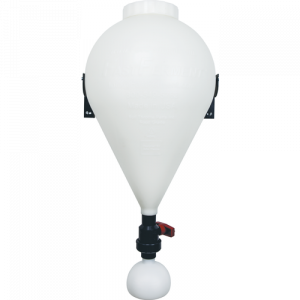
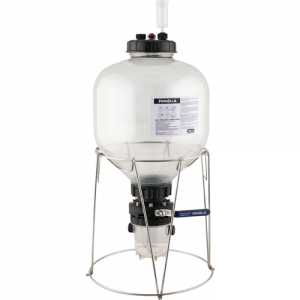
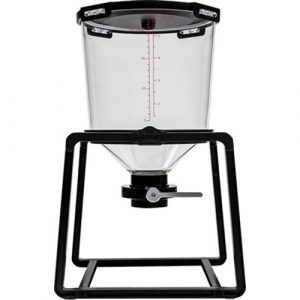
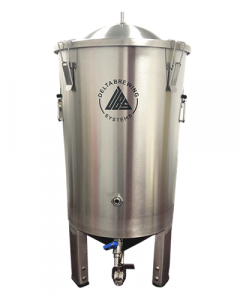
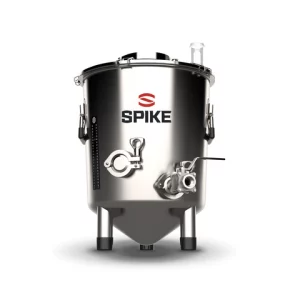
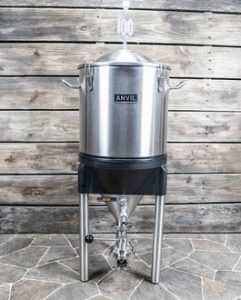
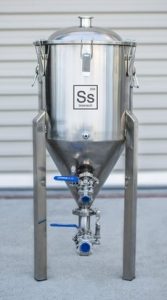
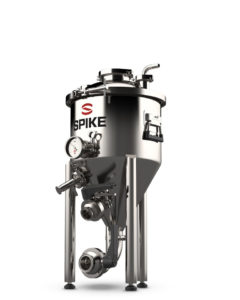





[…] I found the handy chart on this comparison of conical fermenters for home brewing: […]